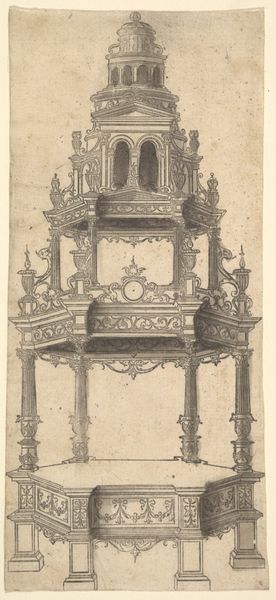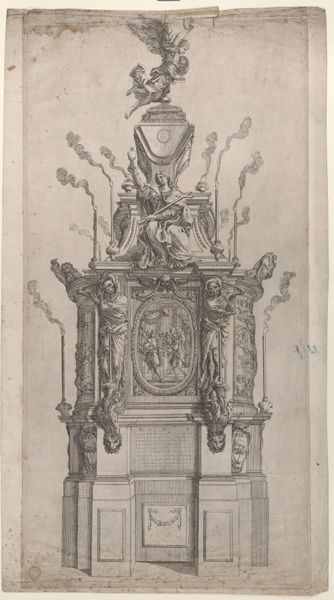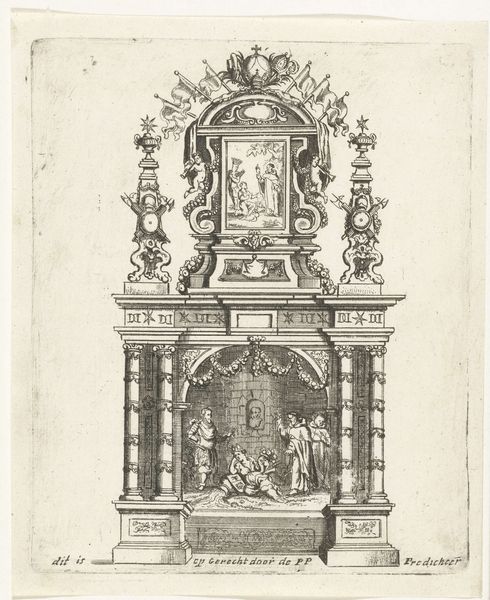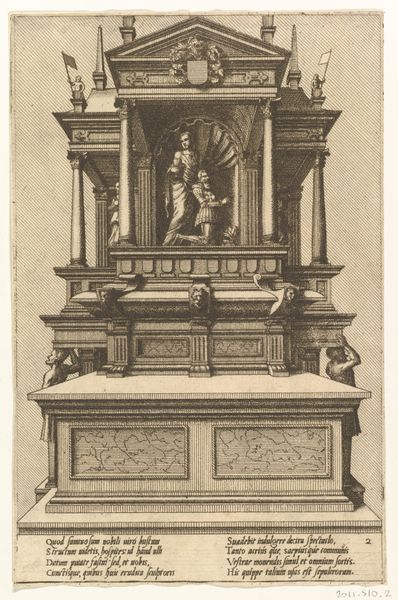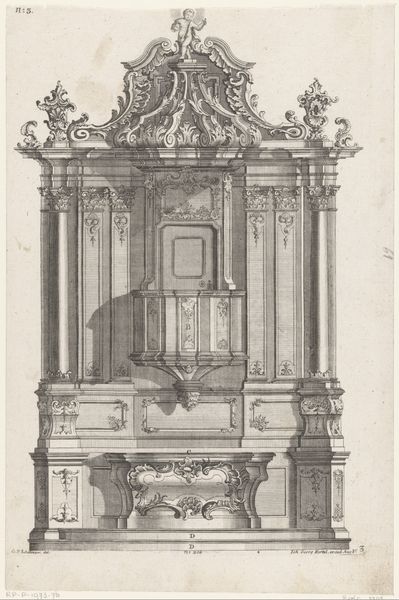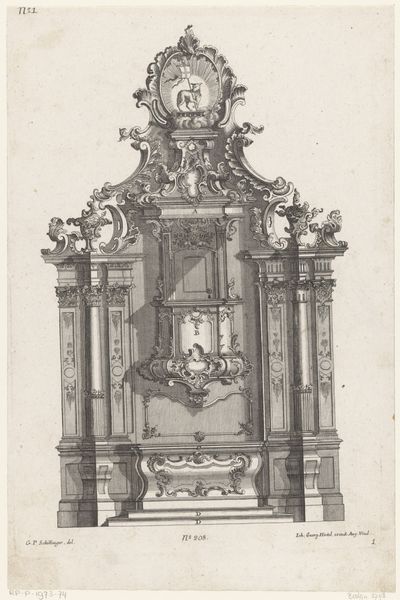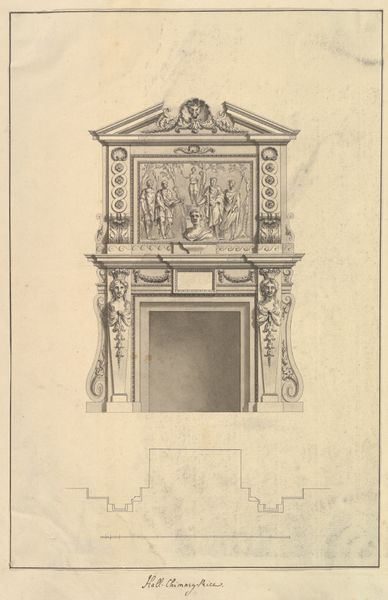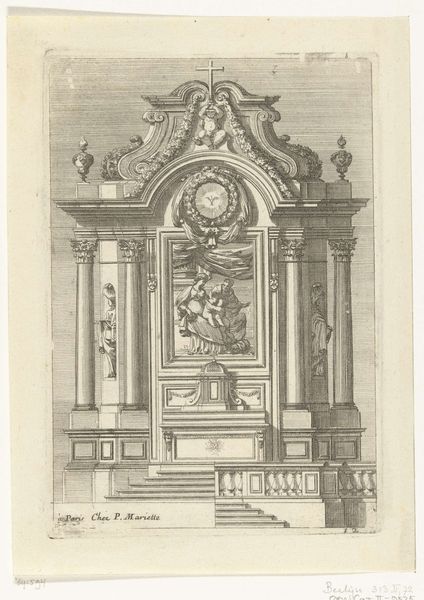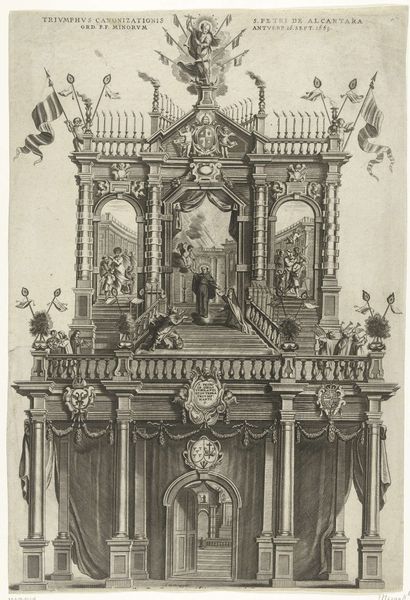
Design for an Altar Erected for the Holy Week 1730 - 1766
0:00
0:00
drawing, print, ink, architecture
#
drawing
#
baroque
#
ink painting
# print
#
perspective
#
charcoal drawing
#
ink
#
geometric
#
history-painting
#
architecture
Dimensions: 7 3/8 x 4 5/8in. (18.7 x 11.8cm)
Copyright: Public Domain
Curator: Looking at this sketch, the composition strikes me as incredibly ambitious. Editor: Indeed. The drawing, titled "Design for an Altar Erected for the Holy Week," was created between 1730 and 1766 by Mauro Antonio Tesi. It’s currently held at the Metropolitan Museum of Art. I see ink primarily, although I believe that the piece may integrate a few other mediums, such as graphite. It's all in service of this quite ornate baroque architectural construction. Curator: Baroque, through and through. Beyond the detailed flourishes, I'm most captivated by its inherent tension. The altar seems caught between the earthly and the divine, weighted down yet aspiring upwards. What stories are being channeled here? Editor: Well, observe the geometric volumes: the firm base; the figures bearing crosses and raising gesturing hands. Each symbol within it would have evoked a certain narrative—suffering, redemption, piety. The Virgin Mary appears to occupy the most important spot; she must carry significant meaning. The winged angel at the very top seems almost triumphant in contrast, representing liberation perhaps. Curator: Absolutely. And think of the history painting rendered on the front. These are figures well known to churchgoers—the architecture gives familiar stories a more visceral context. These visual reminders were extremely crucial at a time of high rates of illiteracy. Consider the work as an exercise of deep, shared memory, a repository of common, unquestioned cultural ideals, visually reinforced. Editor: What's also impressive is the sense of perspective. Tesi’s draftsmanship is clearly refined; notice how the architectural framework diminishes towards the top. The structure feels quite vast despite being contained on a relatively small sheet of paper. I think he understands that the perception of scale helps to suggest divinity. Curator: Scale does invite awe. Seeing how symbols converge with these structural decisions illuminates the Holy Week's cultural importance at that time. There are echoes in similar rituals observed around the world—a powerful link in the human desire for both sacrifice and redemption. Editor: Ultimately, it seems Tesi managed to synthesize a rich semiotic system here into an architectural sketch. Every element seems calibrated toward a specific spiritual and aesthetic effect. Curator: Right, by layering symbols over structure and manipulating spatial perspective, the artwork manages to conjure feelings still alive centuries later. Editor: Indeed, it speaks to the potency of visual language when handled so deftly.
Comments
No comments
Be the first to comment and join the conversation on the ultimate creative platform.
